Projects: Paul's garden
Bheinn
6/24/20255 min read
I started work on this garden in spring. The brief of the design was that the corner bed was to be planted with flowers and plants in a white & purple colour scheme, with the rest of the border having no colour restriction (though I did try to reference these colours again in other parts of the garden). The other main brief was to plant for bees. For this garden the focus was on planting a perennial flower border with some shrubs in the available space without major alterations to the hard landscaping.
The majority of the garden by area is covered by paving slabs, with the only exposed soil forming an L shaped border that runs along part of the rear (south-facing) wall, making a larger bed in the corner and continuing down the length of the west-facing wall. Prior to commencing there were no plants growing in the ground save for a few dandelions and willowherbs. Cymbalaria muralis or ivy-leaved toadflax was growing well along the west facing wall and across the rock border of the corner bed, but that was about it in terms of plantlife.
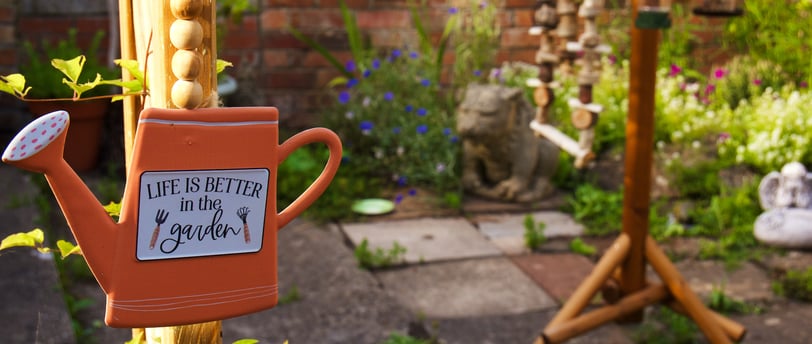

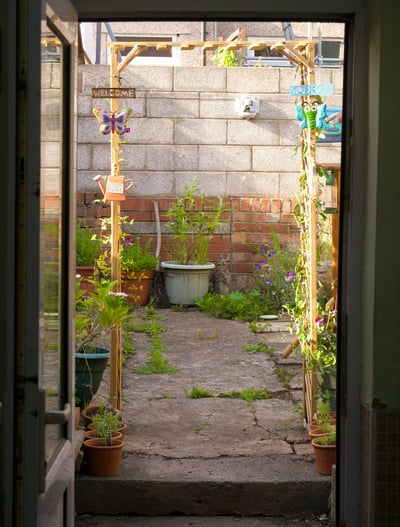

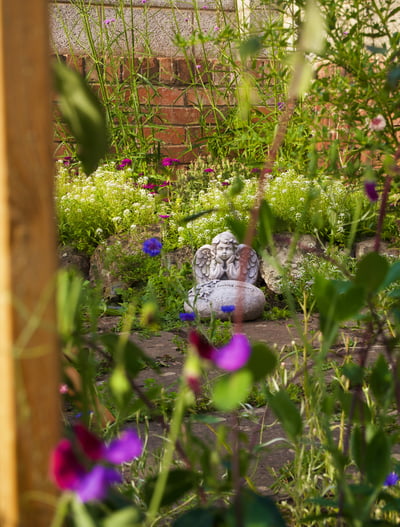

Lathyrus odorata 'Matucana' growing with Lonicera japonica 'Purpurea' up the trellis
The first job was to improve the soil, which was low in organic matter and consequently soil life (no worms at all!). This involved incorporating 100-150 litres of peat-free compost into the topsoil layer with a further layer of compost on top. Due to the fact that the only exposed earth runs along two sides of the garden, I wanted to make use of planters and large pots to create a more immersive feeling to the garden. For this I created a simple trellis arch at the top of the steps when you enter the garden, and in adjacent pots planted purple flowering Clematis and Japanese honeysuckle (Lonicera japonica 'Purpurea'), alongside some old fashioned two-tone annual sweet peas (Lathyrus odoratus 'Matucana') to add some interest for the coming year whilst the perennials establish.
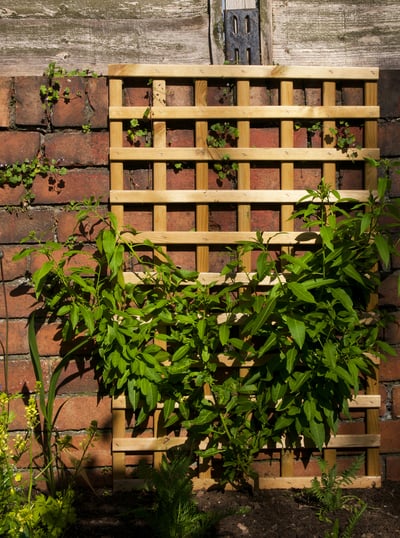

Solanum crispum 'Glasnevin', with a trellis for support
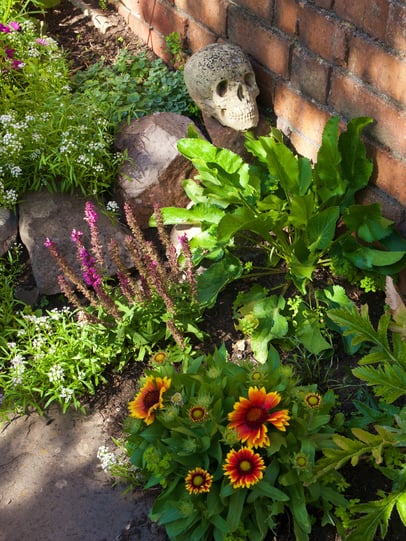

Gaillardia aristata, Salvia and Eryngium by the rock border
The back wall of this garden is fairly ugly concrete breezeblock, and because it's south facing I decided it would make a perfect spot for Wisteria. These plants are main focal points of a garden once established but they are well known for their long establishing periods, sometimes taking years to flower. In this case I wanted something to flower immediately so went for Wisteria frutescens 'Amethyst Falls', a fairly newly developed variety of American wisteria that although smaller and more humble than its Asian relatives is guaranteed to flower in its first year - which is exactly what it did at only 1ft high! In time this will be trained up the wall from where it is planted in the corner and grown along strong galvanised cable across the back wall. It should cover the length of the wall (5 metres) once mature.
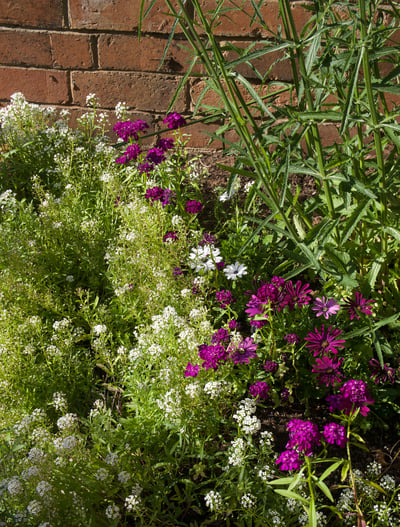

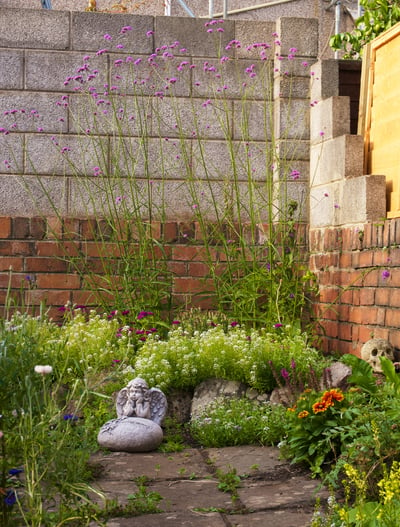

Verbena bonariensis towering above a carpet of Lobularia, Iberis and Osteospermum. The Wisteria is planted in the corner.
I wasn't content with just one showpiece plant in this garden however so decided to go for two species of 'potato vine' or Solanum, phytogeographically divided by the Andes mountains. Solanum laxum is a white flowered species from Uruguay and Brazil whilst Solanum crispum is its purple flowered relative from across the mountains in Chile. Both of these plants are cold hardy in the UK, particularly S. crispum 'Glasnevin', and are especially good in a garden because they are free flowering, meaning the display continues from spring to autumn. These were planted a few metres apart on the west-facing wall where they are being trained up some trellis on to the wooden fence, where in time they will join up and create an impressive floriferous display.
Other perennials shrubs we included were a blue spring-flowering Ceanothus from California, planted in the middle of the patio where we removed a slab, and Genista madeirensis (the clue as to the origin of this plant is in the name!). We scattered some 4000 native creeping thyme seed between the paving slabs hoping to create a carpet of fragrant purple in the summer, however very few of these germinated after quick growing spurge (Euphorbia) colonised the gaps first, so its going to require a second sowing.
An incomplete list of plants that made it into Paul's garden;
Sweet alyssum
Purple annual Iberis
Perennial Iberis
Aubretia
Osteospermum
Lavender
Verbena bonariensis
Lupins
Delphinium
Eryngium
Salvia
Oriental poppy
Gaillardia
Primula
Anemones
Coreopsis
Rudbeckia fulgida var. sullivanti 'Goldsturm'
Achillea filipendulina
Achillea millefolium 'Cerise Queen'
Achillea millefolium 'Red Velvet'
Helenium hoopesii
Fuchsias
Crocosmia 'Lucifer'
Gladiolus
Centaurea
Thymus serpyllum
and a few more!
As with any garden, not everything we planted succeeded. Purple and white Liatris never grew from planted corms because a fox repeatedly dug holes throughout the garden, killing an Aubretia 'Kitte Blue' in the process. Snails ensured that marigolds lasted about 1 week, and the lupins faired even worse. The Verbena bonariensis was mislabelled at the garden centre as a 60cm dwarf form but grew to full 1.5m height, dwarfing the delphiniums and campanulas that were planted behind it, and so both plants will need to have their places swapped come winter. The Genista was labelled even worse; it was sold with no species name with a maximum height up to 8m - in fact it was Genista lydia, a prostrate shrub that will barely reach half a metre in height. Nonetheless most things that I planted were a success and are establishing now in the garden. This is still a very young garden and has yet to 'grow in'. The Solanum, Wisteria, Clematis, Lonicera, Ceanothus, Achillea and Rudbeckia will all take time to establish and fill in the space around them. But the process is well underway and every week brings noticeable change in the garden. Paul is happy, and the bees? They are loving the cornflowers and Verbena.
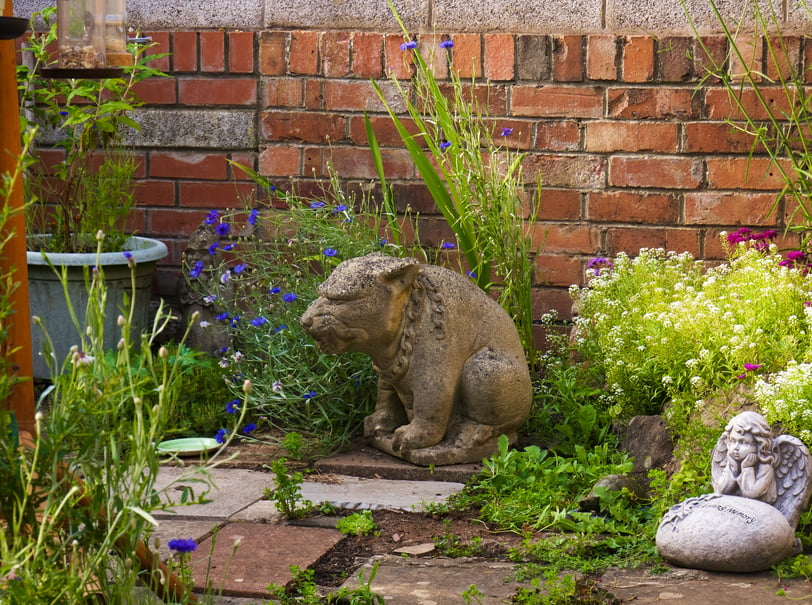

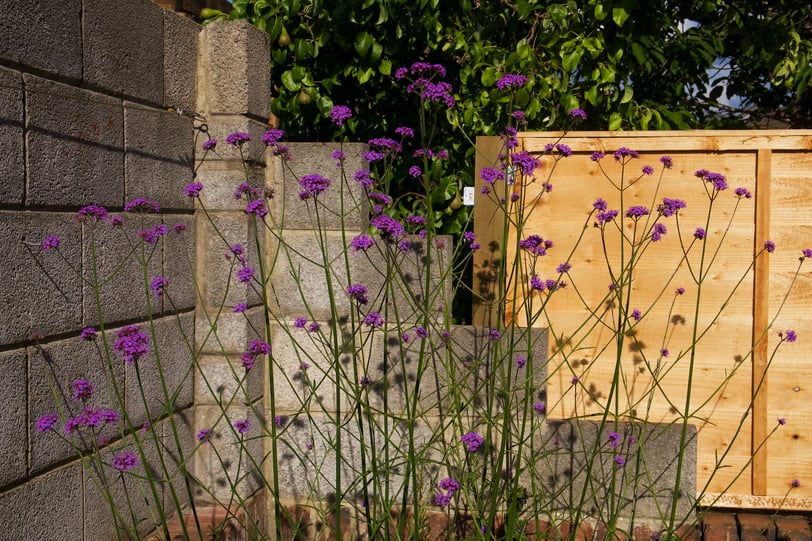

Verbena bonariensis smoothing out a pretty harsh corner. In time Wisteria and Solanum laxum will cover the wall & fence.
Trefoil Garden Maintenance
Organic gardening services in Bristol and surrounds
Contact
Subscribe to my mailing list
+44 74 810 096 42
© Trefoil Garden Maintenance 2025. All rights reserved.
PDC Holder
